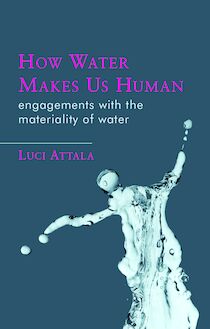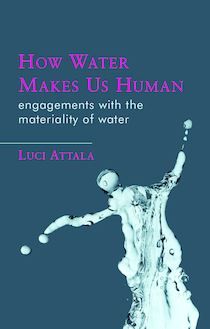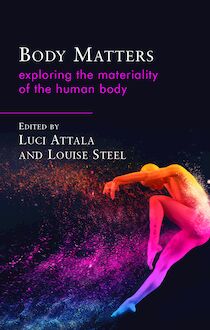-
 Univers
Univers
-
 Ebooks
Ebooks
-
 Livres audio
Livres audio
-
 Presse
Presse
-
 Podcasts
Podcasts
-
 BD
BD
-
 Documents
Documents
-
- Cours
- Révisions
- Ressources pédagogiques
- Sciences de l’éducation
- Manuels scolaires
- Langues
- Travaux de classe
- Annales de BEP
- Etudes supérieures
- Maternelle et primaire
- Fiches de lecture
- Orientation scolaire
- Méthodologie
- Corrigés de devoir
- Annales d’examens et concours
- Annales du bac
- Annales du brevet
- Rapports de stage
La lecture à portée de main
Vous pourrez modifier la taille du texte de cet ouvrage
Découvre YouScribe en t'inscrivant gratuitement
Je m'inscrisDécouvre YouScribe en t'inscrivant gratuitement
Je m'inscrisEn savoir plus
Vous pourrez modifier la taille du texte de cet ouvrage
En savoir plus

Description
Sujets
Informations
| Publié par | University of Wales Press |
| Date de parution | 01 avril 2019 |
| Nombre de lectures | 0 |
| EAN13 | 9781786834133 |
| Langue | English |
| Poids de l'ouvrage | 1 Mo |
Informations légales : prix de location à la page 0,1900€. Cette information est donnée uniquement à titre indicatif conformément à la législation en vigueur.
Extrait
MATERIALITIES IN ANTHROPOLOGY AND ARCHAEOLOGY
HOW WATER MAKES US HUMAN
MATERIALITIES IN ANTHROPOLOGY AND ARCHAEOLOGY
SERIES EDITORS
Luci Attala and Louise Steel
University of Wales Trinity Saint David
SERIES EDITORIAL BOARD
Dr Nicole Boivin
Director of the Max Planck Institute for the Science of Human History
Professor Samantha Hurn
University of Exeter
Dr Oliver Harris
University of Leicester
Professor David Howes
Concordia Centre for Interdisciplinary Studies in Society and Culture
Dr Elizabeth Rahman
University of Oxford
MATERIALITIES IN ANTHROPOLOGY AND ARCHAEOLOGY
HOW WATER
MAKES US HUMAN
ENGAGEMENTS WITH THE
MATERIALITY OF WATER
LUCI ATTALA -->
UNIVERSITY OF WALES PRESS 2019
© Luci Attala, 2019
All rights reserved. No part of this book may be reproduced in any material form (including photocopying or storing it in any medium by electronic means and whether or not transiently or incidentally to some other use of this publication) without the written permission of the copyright owner except in accordance with the provisions of the Copyright, Designs and Patents Act 1988. Applications for the copyright owner s written permission to reproduce any part of this publication should be addressed to the University of Wales Press, University Registry, King Edward VII Avenue, Cardiff CF10 3NS.
www.uwp.co.uk
British Library Cataloguing-in-Publication Data
A catalogue record for this book is available from the British Library.
ISBN 978-1-78683-411-9
eISBN 978-1-78683-413-3
The right of Luci Attala to be identified as author of this work has been asserted in accordance with sections 77 and 79 of the Copyright, Designs and Patents Act 1988.
The publisher has no responsibility for the persistence or accuracy of URLs for any external or third-party internet websites referred to in this book, and does not guarantee that any content on such websites is, or will remain, accurate or appropriate.
Cover image: Shutterstock
Cover design: Hayes Design
CONTENTS
Acknowledgements
Preface
PART ONE
1 Introduction
The direction and purpose: New Materialities
Materiality/Material culture/New Materialities
Why water?
People: bodies and water
Agency
2 Water Behaviours: A Brief Ethnography of Water
What is water?
First light, then water
Being liquid: physics, classifications, breaking the law and transformation
How can one know water? Liquid behaviours
The importance of movement: molecular sociology
Solvents and solutions
But how does water move? Circles, cycles and snakes
The earth and the air
Water: the shape of life, and when water is human
3 Resource or Source?: How to Approach Water in the Time of Climate Change
PART TWO
4 Introduction
5 The Giriama in Kenya: Living with Drought
Water practices: rain, roofs, rivers and water basins
Head carrying: water shaping gendered bodies
Giriama conceptions of water
Fu ha mwenga : fluidity and identity
Watery identities
Identity solutions: blending place, power and water
MaKaya : home from home
Giriama waters and authenticity: understanding the materiality of water
6 Lanjaron, Spain
Slow water: glaciers, ice and snow
The Moorish influence: hydrologers
Invisible waters
Not all waters are equal
Mineral water: healing and destruction
Change: festivities and water
The ritual
7 Welsh Water: The Resourcefulness of Water
Establishing Welsh water: then and now
The language of water
Discourses on deluge
Water relationships, powers and control
Memories of floods and flooding
Water and memory: Remember Tryweryn
Reservoirs
Yma o hyd ( Still here )
8 Concluding Remarks
References
ACKNOWLEDGEMENTS
T he Wenner Gren Foundation has supported the fieldwork for some of the research for this book - under the title The Role of New Water in Shaping and Regulating Futures in Rural Kenya .
I would like to thank: Sam Hurn, Louise Steel, Janet Burton and Ros Coard for listening to me bleat on about water for all these years; my students (particularly Kenny Lewis) for their bold and cheeky insights; Jane Cartwright, Steve Thomas and family, Rosemary Northover, Erin Kavanagh and Martin Bates for their help with the Welsh chapter; Tim Ihssen, who, after editing this, describes himself as an ugly bag of mostly water ; Sarah Lewis of University of Wales Press for this opportunity; my beautiful children, Kizzy, Minna, Llyr and Al, for being hilarious in so many ways, and for being the loves of my life and my absolute best friends; the ever-emerging grandchildren, who joyously demonstrate how materiality reshapes itself; Gary the cat, for waking me up before 6 a.m. because he was hungry and had to be fed immediately ; the community in Kenya (particularly Alex and Loice Katana, and Musa Mare), who put up with my nonsense; and - last but not least - water, because, without you, we are dust.
PREFACE
T his book is one of a series that contributes to what is broadly termed the new material turn in the social sciences. The underpinning intention that coheres the numerous interdisciplinary moves that participate and feed into this flourishing body of literature is to challenge anthropocentricism. This series dethrones the human by drawing in materials. Positioned under the broad umbrella heading of the New Materialisms or New Materialities , the series aims to draw in the non-human as agent, with a view to both recognizing and advocating for the other-than-human entities that prevail and engage in our lives.
In recognition that these terms are somewhat slippery to grasp, we have outlined the following distinctions so as to put clear water between the terms and to demonstrate how we are using them.
Distinctions between materiality and matter
The term materiality describes the quality or character of the material of which a thing is made - what we might call its material-ness. On the other hand, the term matter is used to describe physical items that occupy space (mass). Traditional theories of materiality explore how objects (made of matter (different materials)) shape the lives of people. New Materialities examines the materials (matter) of which objects are made and how those materials influence human behaviour.
Materiality and material culture studies have tended to focus their attention on things or objects , especially the things that people make. Scholarship has been less concerned with how materials behave, in favour of looking at how people use materials. Materiality studies, therefore, demonstrate a connection between humanity and the things that they make and use. In other words, it explores how items reflect their makers and owners, and therefore embody meanings.
The New Materialities turn moves away from objects and examines the materials from which objects are fashioned. Turning attention to the materials allows a new dimension to open up whereby the substance from which a thing is made becomes significant. Bringing materials to the foreground not only shows that materials are instrumental in providing the character and meaning of an item but also that the materials themselves determine - or are even actively responsible for - the final shape and manner by which the finished article can manifest. Thus, how a material behaves predicates how it can be used and, in turn, how we understand it. This perspective gives materials a type of agency both inherently and while in relationship with other materials. Indeed, using this perspective, it is how materials interact or engage that becomes the place of relationship, creativity and attention. Therefore, the NM draws into focus the materials of which things are made and, by focusing on the behaviours and characteristics of those substances, asks the question How do the materials (for which read substances ) from which we make things shape our lives?
PART ONE
1 INTRODUCTION
The direction and purpose: New Materialities
This book is about how water becomes people - or, put another way, how people and water flow together and shape each other. While the focus of the book is on the relationships held between water and people, it also has a broader message about human relationships with the environment generally - one that illustrates not only that people are existentially entangled with the material world, but also that the materials of the world shape, determine and enable humans to be humans in the ways that they are. Therefore, this book is first and foremost about relationships. It focuses specifically on water and, in doing so, draws attention to the liquid gossamer filaments that run through and physically join bodies and other matters, thereby fore-grounding the part that water plays in shaping human lives. Through the adoption of what is broadly termed a New Materialities (hereafter NM ) perspective (following: Bennett 2010; Coole and Frost 2010; Drazin and Küchler 2015) the inextricable links between the worlds of materials that people (as bodies) are part of are demonstrated.
An NM perspective is an inclusive approach to seeing the world (an ontology) that looks at how materials behave together so as to consider life from the perspective of material interactions. It intends to look past the boundaries that seemingly contain entities, to focus instead on how entities influence each other through their materiality. As with other approaches, an inclusive approach recognizes that all situations are complex, contingent, contextual and consist of multiple impacting influences (Urry 2005). However, by using an NM perspective, such complexities are seen to occur within the restrictions of being physical, rather than on other scales (for example, political or economic). It shies away from suggesting that just one aspect, method or manner has precedence over another, and in so doing it supports a move towards the appreciation of the co-generative aspects of relationships (or being together) to explore how relatio
-
 Univers
Univers
-
 Ebooks
Ebooks
-
 Livres audio
Livres audio
-
 Presse
Presse
-
 Podcasts
Podcasts
-
 BD
BD
-
 Documents
Documents
-
Jeunesse
-
Littérature
-
Ressources professionnelles
-
Santé et bien-être
-
Savoirs
-
Education
-
Loisirs et hobbies
-
Art, musique et cinéma
-
Actualité et débat de société
-
Jeunesse
-
Littérature
-
Ressources professionnelles
-
Santé et bien-être
-
Savoirs
-
Education
-
Loisirs et hobbies
-
Art, musique et cinéma
-
Actualité et débat de société
-
Actualités
-
Lifestyle
-
Presse jeunesse
-
Presse professionnelle
-
Pratique
-
Presse sportive
-
Presse internationale
-
Culture & Médias
-
Action et Aventures
-
Science-fiction et Fantasy
-
Société
-
Jeunesse
-
Littérature
-
Ressources professionnelles
-
Santé et bien-être
-
Savoirs
-
Education
-
Loisirs et hobbies
-
Art, musique et cinéma
-
Actualité et débat de société
- Cours
- Révisions
- Ressources pédagogiques
- Sciences de l’éducation
- Manuels scolaires
- Langues
- Travaux de classe
- Annales de BEP
- Etudes supérieures
- Maternelle et primaire
- Fiches de lecture
- Orientation scolaire
- Méthodologie
- Corrigés de devoir
- Annales d’examens et concours
- Annales du bac
- Annales du brevet
- Rapports de stage










